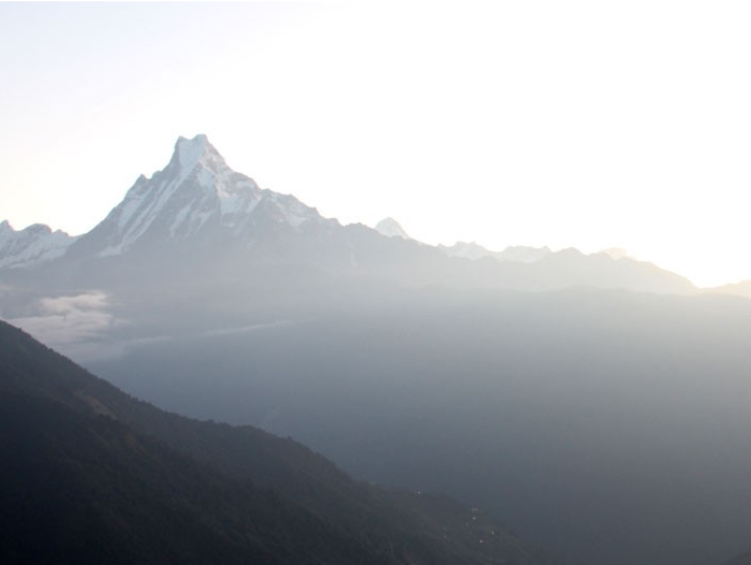The Annapurna region in Nepal is a mesmerizing amphitheater of high peaks, deep valleys, and authentic Himalayan culture. Among the most popular adventures here are the Annapurna Base Camp Trek, Annapurna Circuit Trek, and Annapurna Sanctuary Trek—each offering a distinct perspective of the Annapurna massif and its surrounding landscapes. Though these treks share some common ground, their diversity in scenery, cultural richness, and challenge level make them uniquely rewarding experiences for trekkers of all levels.
Annapurna Base Camp Trek: Direct to the Heart of the Mountains
The Annapurna Base Camp Trek (ABC Trek) is perhaps the most iconic and direct route into the heart of the Annapurna Himalayas. This journey typically spans 7 to 12 days and takes trekkers from verdant forests and traditional Gurung villages to the base of the 8,091-meter Annapurna I.
One of the standout features of this trek is its changing scenery. Starting from lowland rice paddies and rhododendron forests, the trail gradually rises into alpine terrain surrounded by snow-capped giants like Machapuchare (Fishtail Peak) and Hiunchuli. The climax of the journey is the Annapurna Base Camp itself, a natural amphitheater enclosed by towering peaks—an awe-inspiring 360-degree panorama that leaves trekkers speechless.
The ABC trek is moderate in difficulty, making it accessible to trekkers with basic fitness levels. Tea house accommodations along the route provide a warm and comfortable refuge, while the friendly locals offer cultural depth to the adventure.
Annapurna Circuit Trek: A Classic Himalayan Odyssey
If there’s one trek in Nepal that truly encapsulates variety, it is the Annapurna Circuit Trek. Once dubbed the “world’s greatest walk,” this trek circles the Annapurna range over 14 to 21 days, covering 160–230 kilometers depending on the route variations.
What makes the Annapurna Circuit Trek so special is its dramatic contrast in topography, climate, and culture. Beginning in the lush, subtropical forests of Besisahar, the trail ascends through terraced fields, pine woodlands, and into the arid rain-shadow zone of Manang and Mustang. The high point is the Thorong La Pass at 5,416 meters, a physically demanding yet incredibly rewarding section that connects the eastern and western regions of the circuit.
Along the way, trekkers encounter a mosaic of ethnic communities—Gurung, Thakali, and Tibetan-influenced groups—each with their own traditions, architecture, and cuisine. Side excursions to Tilicho Lake, one of the world’s highest lakes, and the spiritual hub of Muktinath Temple further enhance the experience.
The Annapurna Circuit Trek is more physically demanding than the ABC trek due to its duration and higher elevation gains, but it remains one of the most versatile and comprehensive trekking adventures in Nepal.
Annapurna Sanctuary Trek: A Sacred Himalayan Refuge
The Annapurna Sanctuary Trek is often considered synonymous with the ABC trek, but it holds its own as a uniquely spiritual and scenic journey. The “Sanctuary” refers to the sacred glacial basin that hosts Annapurna Base Camp—an area revered by the local Gurung and Magar communities.
Unlike the Circuit, which traverses vast swathes of varied terrain, the Sanctuary trek is more focused, guiding trekkers directly into the heart of the Annapurna range. While shorter than the Circuit, it offers a more intimate connection with the mountains, forests, and high-altitude landscapes.
What sets the Annapurna Sanctuary Trek apart is its spiritual significance. The entire basin is considered holy ground, believed to be the home of ancient gods and protected by mountain deities. The peaceful atmosphere, coupled with the natural grandeur, offers a more meditative experience.
In recent years, many trekkers opt for a combination of the Sanctuary and Base Camp routes, making it an ideal choice for those who want a rich experience without the high-altitude challenges of the Thorong La Pass.
Choosing Between the Treks
Here’s a comparison to help decide which trek suits you best:
| Trek Type | Duration | Max Elevation | Highlights | Difficulty |
| Annapurna Base Camp Trek | 7–12 days | 4,130m | Panoramic mountain views, culture, ABC site | Moderate |
| Annapurna Circuit Trek | 14–21 days | 5,416m | Thorong La Pass, diverse landscapes, temples | Challenging |
| Annapurna Sanctuary Trek | 9–12 days | 4,130m | Sacred glacial basin, cultural depth | Moderate |
Each trek appeals to a different kind of traveler. The ABC Trek is ideal for those seeking a balanced and direct route to a high-altitude experience. The Circuit is best suited for adventurous trekkers looking for variety, endurance, and a longer immersion into Himalayan culture. Meanwhile, the Sanctuary Trek offers a spiritual and peaceful route into sacred terrain with less physical demand than the Circuit.
Trekking Essentials
Regardless of your choice, preparation is crucial. The best seasons are pre-monsoon (March to May) and post-monsoon (late September to November) when the skies are clear, and the mountain views are spectacular.
Here are a few tips to enhance your trekking experience:
- Train in advance with cardio and strength exercises.
- Pack light but smart—layers, waterproofs, and a good pair of trekking boots are essential.
- Acclimatize properly, especially if tackling Thorong La.
- Stay hydrated and maintain a balanced diet to help prevent altitude sickness.
- Respect local cultures—dress modestly, ask before taking photos, and support local businesses.
Conclusion: One Region, Infinite Stories
The Annapurna region stands as a testament to Nepal’s remarkable diversity—geographically, culturally, and spiritually. Whether you’re venturing on the Annapurna Base Camp Trek to stand beneath towering peaks, circling the range via the Annapurna Circuit Trek for an epic journey across ecological zones, or entering the Annapurna Sanctuary Trek to feel the serene power of sacred mountains, you’re guaranteed an unforgettable adventure.
Each trek is not just a walk through landscapes but a path into the soul of the Himalayas. They connect travelers to a legacy of myth, nature, and community that leaves a lasting imprint on the heart. Choosing between them isn’t about better or best—it’s about what kind of story you want to tell when you return home.

